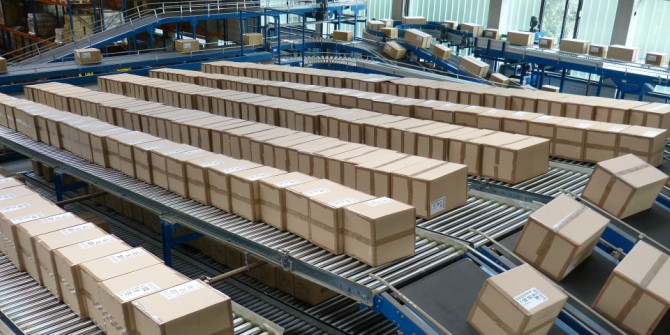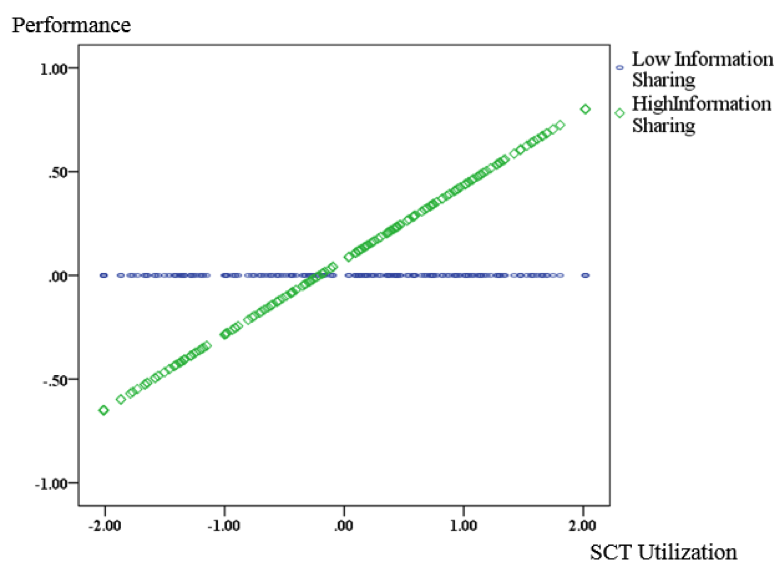
Many technologies typically referred to as supply chain technologies (SCT) are increasingly being adopted by firms to manage their supply chains. The underlying premise is that they can help improve communication among supply chain partners, which will enhance supply chain efficiency, thus creating value for shareholders. However, in spite of the potential benefits of SCT, these technologies are not always used effectively.
Several reasons could explain this, some of which could be related to a firms’ real motive for adopting the technologies. Anecdotal evidence has demonstrated that many managers have some resistance to fully utilizing the SCT after it’s adopted. Additionally, despite the vast amount of research on the effectiveness of these technologies’ utilisation, findings related to their effects on a firm’s performance are inconsistent: some researchers have found a significant positive effect, while other have not. This inconsistency makes managers further question the value of SCT adoption for their firms.
We conducted an empirical study to understand the utilisation of SCTs and their performance implications. We defined SCT utilisation as the adoption and actual implementation of a composite of supply chain technologies, including Enterprise Resource Planning, Advanced Planning and Optimisation, and Warehouse Management Systems.
The first objective of our empirical research was to study how firms’ motives in adopting SCT relate to the levels of utilisation of the new technology. We compared two different types of motivation:
- Legitimacy motivation (externally-driven factor): when adoption is driven by the action of customers and suppliers, or the need to mimic competitors.
- Efficiency motivation (internally-driven factor): when adoption is driven by managers’ need to achieve better efficiency in their operations, including improving customer services and the like.
The second research objective was to investigate whether SCT utilisation leads to better or worse performance for firms, and, whether information sharing and logistics integration with supply chain partners would influence the effectiveness of using these technologies.
To fulfil these objectives, we developed and tested a research model using a dataset of 202 firms that responded to a survey of a random sample of Australian manufacturing firms.
Results
We found that the extent of SCT utilisation is positively and significantly driven by the efficiency motivation, but not by the legitimacy motivation. Previous studies have shown that both legitimacy and efficiency motivations can be linked to adoption. But our findings indicate that the more firms are driven to adopt SCT by their efficiency needs, the more they will actually use the technology. If firms simply mimic institutional actors that they perceive as successful in adopting SCT, they are less likely to utilise the technology to a large extent.
The significant relationship between the efficiency motivation and SCT utilisation is not surprising. However, the non-significant effect of the legitimacy motivation on SCT utilisation sends an important message and could perhaps explain why many firms fail to fully utilise the technology that they adopted, with many of them involving huge sunk costs. It would appear that adopting SCT for legitimacy reasons may be superficial, with no clear strategic goals about how to operationalise the technology.
Unlike in SCT adoption, SCT utilisation requires firms to have operational focus to enable effective implementation. Also, SCT utilisation can be complex and difficult as it may require changes in the processes or systems in a firm’s operations. As a result, firms will be more strongly motivated to learn and invest in training programs on how to utilise SCTs that are perceived to address real needs or have potential practical benefits than those technologies that are adopted for legitimacy reasons.
We also found that the more SCT are utilised, the better a firm’s delivery performance, which supports the case for implementation and utilisation of SCT in firms. Interestingly, we found that the effectiveness of SCT may be influenced (or moderated) by the level of information sharing with the firms’ supply chain partners. In other words, the effect of SCT utilisation on delivery performance increases when the level of information sharing with supply chain partners is high compared with when the level of information sharing is low and vice versa (see Figure 1 below for illustration). This suggests that the extent of SCT effectiveness is contingent upon the level of information sharing amongst firms in the supply chain.
Figure 1: Relationship between supply chain technology utilisation and performance 
Implications for managers
Our findings demonstrate that managers must base their SCT adoption decisions on a careful analysis of the organization’s need to improve efficiency. This is because technologies adopted based on the efficiency motive would have better chances of being subsequently highly utilised, thus, providing the needed return on investment. There are many technologies that are effective by design.
The main problem, however, always tends to be the implementation of such technologies, which was the focus in this study. How can we explain why some managers utilise fully or exploit to the full the potential of available technologies while others do not? So an important implication for managers is in understanding that SCT technologies have to be adopted for the right reasons. Managers that adopt SCT for efficiency reasons tend to use it more (perhaps because there is a genuine need for it) than managers that adopt the SCT for legitimacy reasons.
Given the inconsistent findings relating SCT adoption to performance, the positive relationship between SCT utilisation and performance highlighted in this research is reassuring to managers. Our findings also show that the effectiveness of SCT utilisation is actually contingent on the extent of information sharing between supply chain partners. This finding implies that for managers to reap the full benefits of supply chain technologies, they must encourage and share timely and accurate information with their supply chain partners. While we confirm that SCT utilisation is associated with better performance, it is important to note that the use of SCT is more effective when the level of information sharing between SC partners is high compared to when it is low. This relates to the composite of SCT considered in our study rather than one technology compared to another.
♣♣♣
Notes:
- This blog post is based on the authors’ paper Supply Chain Technologies: Linking Adoption, Utilization, and Performance, Journal of Supply Chain Management, Volume 52, Issue 4, October 2016
- The post gives the views of its author, not the position of LSE Business Review or the London School of Economics.
- Featured image credit: Logistics, by falco, under a CC0 licence
- Before commenting, please read our Comment Policy.
 Zhongzhi Liu is a doctoral candidate at Arizona State University. His primary research interests are innovation in supply chain management and emerging issues in crowdsourcing. His research has appeared in leading journals. His dissertation examines how a buying firm’s crowd development impacts crowd performance in crowdsourcing.
Zhongzhi Liu is a doctoral candidate at Arizona State University. His primary research interests are innovation in supply chain management and emerging issues in crowdsourcing. His research has appeared in leading journals. His dissertation examines how a buying firm’s crowd development impacts crowd performance in crowdsourcing.
 Daniel Prajogo is an Associate Professor at Monash University. His research interests include quality management and innovation management.
Daniel Prajogo is an Associate Professor at Monash University. His research interests include quality management and innovation management.
 Adegoke Oke is an Associate Professor at Arizona State University. His research interests include innovation in supply chains and networks, risk management in supply chains, and supply chain management in developing economies. His work has been published in leading academic journals.
Adegoke Oke is an Associate Professor at Arizona State University. His research interests include innovation in supply chains and networks, risk management in supply chains, and supply chain management in developing economies. His work has been published in leading academic journals.





